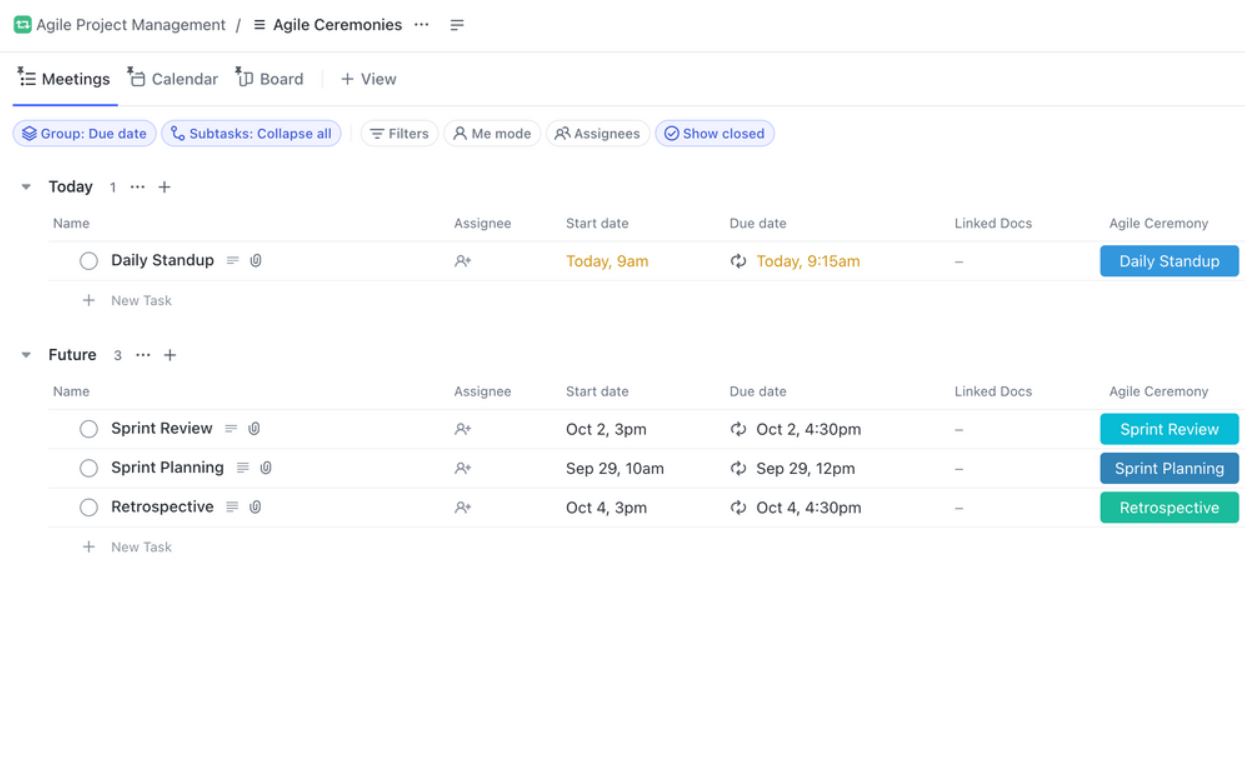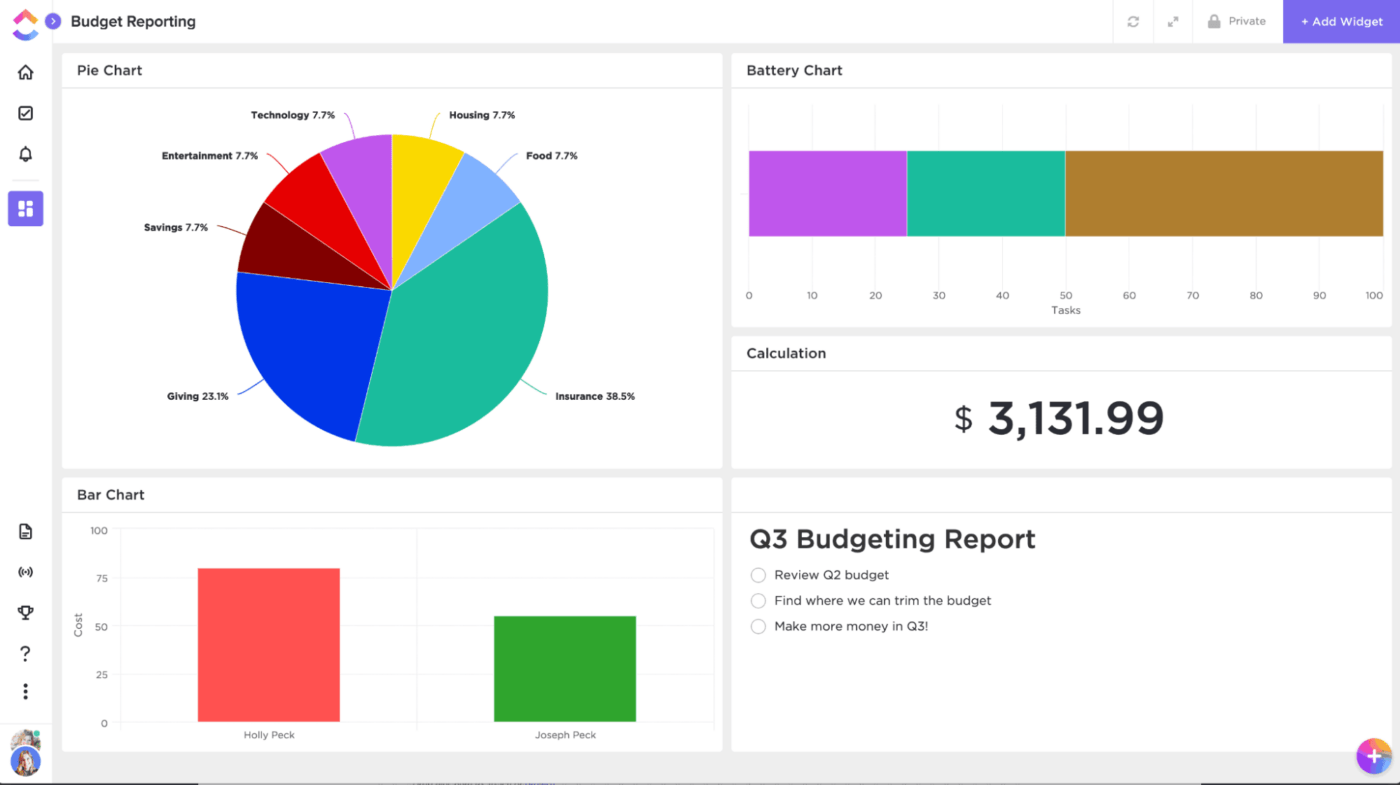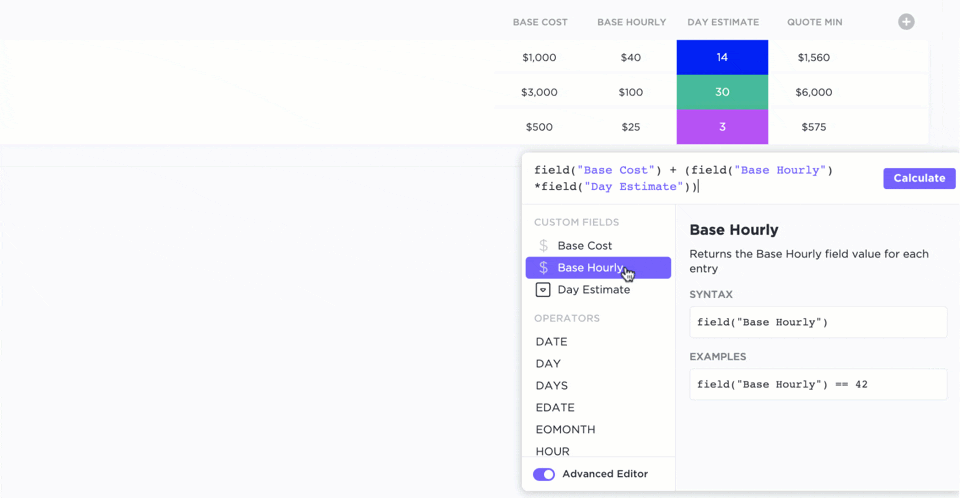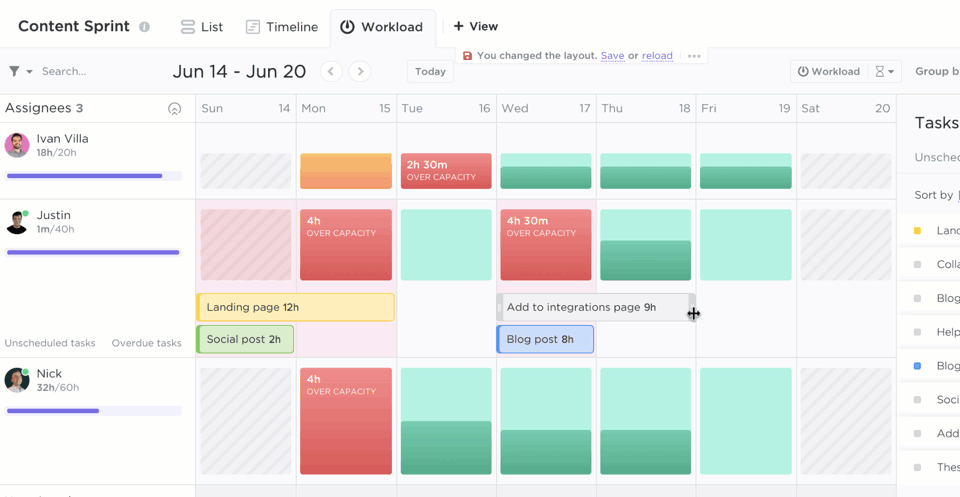"الاستجابة للتغيير على اتباع خطة" هي الركيزة الرابعة من ركائز بيان أجايل . وهو يلخص ما يعنيه أن تكون "رشيقًا"، ويتوقع من الفرق أن تتبنى التغيير وتتطور ديناميكيًا مع متطلبات العمل المتغيرة.
وهذا يعني أنك بحاجة إلى أعضاء الفريق والمديرين الذين يتكيفون مع التغيير ويمتلكون المهارات والقدرات اللازمة للتحول عندما يتطلب الموقف ذلك. يساعد تخطيط القدرات الرشيقة في ذلك.
ما هو التخطيط الرشيق للقدرات؟
تخطيط السعة الرشيقة هو عملية تقييم مقدار الوقت الإنتاجي المتاح في كل سباق سريع. يستخدم مديرو المشاريع التخطيط الرشيق تخطيط السعة لجدولة العمل وإدارة تسليم البرامج.
خطة السعة الرشيقة هي دالة على ما يلي.
- طول الفترة الزمنية للسباق السريع: عادةً ما تكون أسبوعين أو عشرة أيام عمل
- حجم الفريق: عدد أعضاء الفريق المتاحين للسباق السريع
- توافر الفريق: عدد الساعات التي يكون فيها أعضاء الفريق متاحين، مع خصم أي إجازات وعطلات
- معدل الاستخدام: الوقت الذي يمكن للفريق العمل فيه على أهداف السباق السريع، وعادة ما يكون 0.6-0.8
إذا كنت مرتبكاً من كل هذه المصطلحات، فإليك مسرداً مفيداً ل مصطلحات أجايل سكروم .
في حين أن أجايل كمنهجية بدأت كممارسة لتطوير البرمجيات، فقد تم تبنيها مؤخرًا من قبل فرق العمل في جميع المجالات. الوكالات الرقمية ، وفرق كتابة المحتوى، وشركات التجارة الإلكترونية، وما إلى ذلك، تستخدم منهجيات رشيقة مثل كانبان أو سكروم لتقديم الخدمات بفعالية.

_قالب إدارة المشاريع الرشيقة الخاص بـ _ClickUp
إذا كنت من غير العاملين في مجال البرمجيات مشروع تطوير مدير يتطلع إلى تبني ممارسات رشيقة, قالب إدارة المشاريع الرشيقة من ClickUp مكان رائع للبدء.
يمكنك استخدام النموذج المضمّن لتبسيط الطلبات في الأعمال المتراكمة، واستخدام سباقات السرعة لتنفيذ المهام وتشغيل مراسم رشيقة مثل الاستعدادات والاستعراضات بأثر رجعي، كل ذلك داخل ClickUp.
سعة الفريق مقابل سرعة الفريق في أجايل
قدرة الفريق وسرعة الفريق هما مقياسان مهمان للغاية تطوير البرمجيات الرشيقة تستخدمها الفرق.
تشير سعة الفريق إلى عدد ساعات التطوير المتاحة في كل سباق سريع. تشير سرعة الفريق إلى عدد نقاط القصة التي يمكن للفريق تطويرها في كل سباق سريع.
استنادًا إلى سرعة الفريق التي تم إنجازها في الماضي، يقوم مدير المشروع الرشيق أو مدير سكروم بتقدير السعة المستقبلية وجدولة قصص المستخدمين للمطورين.
فوائد وأهمية تخطيط القدرات الرشيقة
يتطلب تطوير البرمجيات الرشيقة الوضوح في الفوضى. حتى مع تطور متطلبات العمل، فإن فريق سكروم يتكيف ويستمر دون فقدان الزخم. قائم على القدرات التخطيط السريع يضمن ذلك.
تسليم البرمجيات بشكل موثوق: من خلال التخطيط الدقيق للقدرات، يمكن للفرق الرشيقة التنبؤ بالجهود الهندسية بشكل أفضل، مما يخلق المزيد من القدرة على التنبؤ. لذا، فإنها تقدم التزامات قابلة للتحقيق وتفي بما وعدت به.
تحسين الثقة: عندما يكون تسليم البرمجيات موثوقًا ويمكن التنبؤ به، تزداد الثقة بين فرق العمل والفرق الهندسية. وهذا يعزز التعاون والابتكار.
جودة أفضل للبرمجيات: يضع التخطيط الرشيق للقدرات هيكلاً لما يمكن تحقيقه بشكل معقول في كل سباق سريع. وهذا يضمن أن الفرق لا تقطع الزوايا وتتبع أفضل الممارسات.

إعداد تقارير الميزانية على ClickUp
إدارة دقيقة للميزانية: عندما يتمكن مديرو المشاريع من التنبؤ بدقة بقدرة الفريق، يمكنهم أيضًا إدارة مواردهم وميزانياتهم بشكل أكثر كفاءة. إذا كنت تستخدم أداة إدارة المشروع مثل ClickUp، يمكن أيضًا حساب الميزانيات وتقارير النفقات تلقائيًا استنادًا إلى بيانات استخدام السعة.
تحسين معنويات الفريق: يتم تخطيط السعة بناءً على مدى توافر أعضاء الفريق خلال كل سباق سريع. يُظهر أعضاء الفريق التزامًا ومشاركة أعلى في المشروع حيث يختارون مقدار العمل الذي يمكنهم القيام به.
تحسين العملية: تخدم الرؤى المستقاة من تخطيط السعة أيضًا العديد من منهجيات تحسين العمليات . وهي تساعد في تقييم الأداء والإنتاجية وجودة عمل الفريق، وبناء كفاءات تراكمية مع مرور الوقت.
يعود التخطيط الجيد للقدرات الرشيقة بالفائدة على كل أصحاب المصلحة المشاركين في المشروع. فهو يساعد مديري المشروع على توجيه عملية التسليم في الاتجاه الصحيح والحفاظ على الالتزام. ويدعم أعضاء الفريق في الأداء بأقصى إمكاناتهم. والأهم من ذلك أنه يبني الثقة والموثوقية للفريق الهندسي بين أصحاب المصلحة في العمل.
لا يخلو نشاط بالغ الأهمية لنجاح مشروع تطوير البرمجيات من التحديات. دعنا نستكشف بعضها ونرى كيف يمكنك التغلب عليها.
تحديات تخطيط السعة الرشيقة ## تحديات تخطيط السعة الرشيقة
في حين أن الأمر يبدو بسيطاً في ظاهره، إلا أن تخطيط السعة الرشيقة ينطوي على مجموعة واسعة من العوامل التي يجب تقديرها بدقة مسبقاً. فيما يلي بعض المتغيرات الرئيسية التي يمكن أن تؤثر على تخطيط السعة الرشيقة.
استقرار الفريق: لكي يكون تخطيط السعة الرشيقة فعالاً، تحتاج إلى فريق عمل ثابت. إذا كانت لديك سعة 40 ساعة في أحد سباقات السرعة و400 ساعة في سباق آخر، فلا يمكن تحقيق أي من الفوائد.
الإنتاجية الفردية: يمكن أن تختلف مهارات وإنتاجية أعضاء الفريق بشكل كبير. فقد يحتاج المتدرب إلى 10 ساعات لإكمال مهمة يمكن أن ينجزها ذو الخبرة في 10 دقائق. في الأساس، ليست كل الساعات الهندسية أو القدرات الفردية متساوية.
معدل الاستخدام: يقدّر معدل الاستخدام - الذي يُعرف أحيانًا باسم عامل التركيز - جزءًا من ساعات عمل الفريق الذي يجب أن يظل مركزًا على سباق السرعة. في حين أن هذا تقدير معقول، إلا أنه يمكن أن يختلف. على سبيل المثال، قد يكون معدل الاستخدام في آخر سباق سريع من السنة التقويمية أقل بالنظر إلى موسم العطلات القادم.
القدرة على التوسع: ضمن فريق صغير، يكون تخطيط السعة الرشيقة أمرًا بسيطًا. ومع ذلك، في المؤسسة الكبيرة التي تحتاج إلى تخطيط السعة عبر فرق متعددة، قد يكون جمع البيانات الصحيحة والتنبؤ أمراً صعباً.
القيم النسبية: تُقاس السعة عادةً بالساعات، وهو أمر مطلق. ومع ذلك، فإن سرعة الفريق وتخصيص المهام غالبًا ما يتم بقيم نسبية مثل نقاط القصة. ويواجه التوفيق بين الاثنين اختلافات في الرأي.
تحتاج فرق أجايل إلى المزيج الصحيح من الأدوات والعمليات للتغلب على هذه التحديات. فيما يلي بعض الأطر للمساعدة.
كيفية حساب السعة في أجايل ## كيفية حساب السعة في أجايل
في أبسط أشكالها، السعة الرشيقة = مدة سبرينت × توفر الفريق × معدل الاستخدام. A برنامج مجاني لإدارة المشاريع أو جدول بيانات يمكن أن يساعدك في إجراء هذا الحساب.
ومع ذلك، فهي ليست دائماً واضحة ومباشرة. قد يكون لكل من هذه المتغيرات عوامل أخرى مساهمة. نستكشفها أدناه ونعرض أمثلة عليها.
مدة البصمة: مدة السبرينت هي عدد الأيام المخصصة لكل تكرار. يمكن أن تكون مدة السباق النموذجي أسبوعين أو أربعة أسابيع، على الرغم من أن الأسبوعين أكثر شيوعًا. دون احتساب العطلات والعوامل الخارجية الأخرى، فإن السباق السريع النموذجي يستغرق عشرة أيام عمل.

تقسيم عبء العمل تلقائيًا لمدة 8 ساعات على مدار يومين على ClickUp
توافر الفريق: يعتمد مدى توافر الفريق على عدد أعضاء الفريق، وساعات العمل في اليوم، والالتزام بالمشاريع الأخرى، والاجتماعات، والأنشطة الأخرى خارج العمل، والغياب، إن وجد.
التوفر = عدد أعضاء الفريق × (عدد ساعات العمل - وقت خارج العمل - الغياب)
معدل الاستخدام: من غير المعقول أن نتوقع من أعضاء الفريق أن يعملوا 100% من الوقت على قصص المستخدمين الموكلة إليهم. فهم بحاجة إلى استراحاتهم الإبداعية واجتماعاتهم التعاونية وما إلى ذلك. يقدّر مديرو المشاريع نسبة الاستخدام بـ 80% مع فريق من ذوي الخبرة أو 60% مع الخريجين الجدد أو أعضاء الفريق الجدد.
لنرى كيف تعمل هذه المعادلة عملياً.
مثال السيناريو الأول
لنفترض أن لديك فريقًا مكونًا من 10 أشخاص يعملون لمدة 8 ساعات يوميًا في سباق سريع مدته 10 أيام.
ستكون سعتك الرشيقة للسباق التالي 10 (مدة السباق) × 10 (حجم الفريق) × 8 (مدى توافر الفريق) × 80% (معدل الاستخدام)، أي 640 ساعة.
مثال السيناريو الثاني
لنفترض أن لديك فريقًا مكونًا من خمسة مطورين بدوام كامل يعملون 8 ساعات في اليوم وخمسة استشاريين بدوام جزئي يعملون 3 ساعات في اليوم. منهم مطور واحد بدوام كامل في إجازة لمدة أسبوع واحد.
في هذه الحالة، ستكون قدرتك الرشيقة لسباق السرعة لمدة أسبوعين على النحو التالي.
- توافر الفريق [4 (مطورين بدوام كامل) × 8 (ساعات) + 5 (مطورين بدوام جزئي) × 3 (ساعات) × 10 (أيام عمل) ] + [1 (مطور بدوام كامل) × 8 (ساعات) × 5 (أيام عمل) ]
- معدل الاستخدام: 80%
السعة = 408 ساعات
مع ازدياد حجم الفريق، يتأثر معدل التوافر بعوامل أخرى، ويمكن أن يصبح تخطيط السعة معقداً بشكل لا نهائي. إليك كيف يمكنك ضمان إجراء تخطيط فعال للسعة الرشيقة باستخدام الأدوات المناسبة.
كيفية تنفيذ تخطيط السعة الرشيقة الفعال
يتضمن التخطيط الفعال للسعة الرشيقة عدة خطوات يمكن أن تختلف بشكل كبير بناءً على عدد من العوامل. فيما يلي إطار عمل باستخدام أداة إدارة المشاريع الرشيقة التي ستساعدك على البدء.
هل أنت جديد في إدارة المشاريع الرشيقة؟ إليك عشرة خطوات قوالب رشيقة لمشاريعك لمنحك الأساس والبيانات اللازمة لتخطيط السعة الفعالة.
استعد لسباق السرعة التالي
أفضل وقت لتخطيط السعة هو أثناء اجتماع التخطيط للسباق السريع. قبل التخطيط للسعة، حدد العناصر المتراكمة التي تخطط للعمل عليها وحدد أولوياتها. يمكنك بدء العملية الخاصة بك في البداية أو استخدام واحد من العديد من نماذج تخطيط السعة لإرشادك خلال العملية.

عرض اللوحة الخلفية على ClickUp لتخطيط السباق
إذا كنت تستخدم أداة لإدارة المشاريع مثل ClickUp، فستكون قد قمت بتخطيط دورة حياة المنتج بالكامل، بما في ذلك جميع القصص. يمكنك إلقاء نظرة على العناصر المتراكمة وتقييم حالتها واختيار العناصر المناسبة لسباق السرعة التالي. سيعطيك هذا فكرة عن السعة الإجمالية التي ستحتاجها على الأرجح.
قالب لالتقاط عبء عمل الموظفين لفريق رشيق
مع قالب عبء عمل الموظف في ClickUp ، يمكنك تحديد التوقعات وتخطيط المهام بحيث لا يشعر أي شخص بالإرهاق أو عدم الاستعداد. بكفاءة إدارة الفريق عبء العمل وتخطيط سباقات السرعة القادمة باستخدام هذا القالب.
حدد المهارات التي تحتاجها
قبل أن ترى القدرات التي لديك، حدد ما تحتاج إليه. بناءً على القصص التي اخترتها، قد تحتاج إلى عدد x من المطورين، وعدد y من محللي الجودة، وعدد z من محللي الأعمال.
قم بإجراء هذه الحسابات وحدد المواصفات الدقيقة لأعضاء الفريق الذين تحتاجهم.
حدد مدة سباق السرعة
استنادًا إلى العناصر المتراكمة التي حددتها، حدد المدة التي سيستغرقها العدو السريع التالي. قم بإزالة أي عطلات أو أيام إجازات أخرى على مستوى الفريق/المنظمة من هذا الحساب.
فهم مدى توفر الفريق
لا يوجد سباق سريع جديد. فالمشاريع الجارية دائمًا ما يكون لها دائمًا ترحيلات من سباقات السرعة السابقة، وقد يضطر أعضاء الفريق إلى العمل في مشاريع أخرى. احسب بدقة مدى توافر الفريق للسباق التالي.

نقر فوق عرض عبء العمل
عندما تستخدم ClickUp لإدارة عمل فريقك، يمكن الوصول فوراً إلى إنتاجيتهم السابقة وتوافرهم المستقبلي. تتيح لك طريقة عرض عبء العمل رؤية تقديرات الوقت، والمهام المنجزة، والمهام المفتوحة، ونقاط السبرنت، وما إلى ذلك.
عندما يقوم كل عضو من أعضاء الفريق بإدخال خطط إجازته/إجازته إلى ClickUp، يمكنك أيضًا تسجيل مدى توفره بدقة لتخطيط المشروع.

الصيغ المتقدمة في الحقول المخصصة في ClickUp
يمكنك أيضًا حساب مدى توافر الفريق تلقائيًا باستخدام الصيغ المتقدمة في الحقول المخصصة في ClickUp.
قم بإعداد التفرغ في ClickUp
استخدم مهام ClickUp لإعداد كل عنصر كجزء من سباق السرعة الخاص بك. استخدم طريقة عرض المهام لتفصيل قصة المستخدم، أو ترك التعليقات، أو تعيين الأولوية، أو إضافة علامات أو أي حقل مخصص آخر قد تحتاج إليه.

عرض التقارير الأسبوعية على ClickUp
استنادًا إلى البيانات من الماضي، أضف وقتًا تقديريًا لكل مهمة للتأكد من إمكانية إكمالها خلال فترة السباق. ثم قم بتعيين تواريخ البدء/الانتهاء والتبعيات.
احصل على التزام الفريق
التنظيم الذاتي الفرق الرشيقة مثل الاستقلالية. لذا، بدلاً من تعيين المهام لأعضاء فريقك، قم بالدعوة إلى عقد اجتماع وشجعهم على الالتزام بتوافرهم. اسمح لهم بتعيين المهام لأنفسهم وحل أي مشاكل في هذه العملية.
تأكد من أن كل شيء جاهز
بمجرد إعداد سباقك السريع بالكامل على ClickUp وتعيين المهام، فقد حان الوقت للتأكد من أن فريقك قادر على إكمالها.

عرض عبء العمل على ClickUp
ترشيد عبء العمل: يساعد عرض عبء العمل في المشروع على رؤية تخصيص الموارد عبر جميع أعضاء الفريق، حيث يمكنك إضافة/إزالة المهام بناءً على الاستخدام. إذا كان هناك شخص ما في المنطقة الحمراء، أي أنه ذو سعة زائدة، فقم بإزالة المهام من قائمته وتقييم سرعة التسليم. بالنسبة لأولئك الذين هم أقل من السعة، يمكنك إضافة مهام سريعة.

طريقة عرض مخطط جانت البياني للنقر فوق مخطط جانت لتخطيط سعة العدو السريع
الجداول الزمنية السريعة: استخدم طريقة عرض مخطط جانت ClickUp Gantt البياني لتنظيم سباقات السرعة وإدارة المراحل الرئيسية. اطلع على التبعيات والمهام المتصلة للتأكد من إمكانية إكمالها. قم بإجراء تحديثات بسهولة لمعالجة العوائق وتغيير الجداول الزمنية.

CickUp Automations
زيادة الاستخدام مع الأتمتة: يمكنك تحرير سعة مواردك عن طريق إلغاء المهام الإدارية المتكررة من خط سيرها. استخدم أتمتة ClickUp Automations لتعيين المهام ونشر التعليقات ونقل الحالات. اختر من بين أكثر من 100 عملية أتمتة قابلة للتخصيص، بما في ذلك عمليات التكامل مع أدوات مثل GitHub وSentry.
حافظ على المرونة طوال الوقت
من الشائع أن تتم إضافة قصص جديدة إلى سباق سريع أو أن يمرض أحد أعضاء الفريق، مما يؤثر سلباً على القدرة. يمكن للفريق الرشيق حقًا أن يتكيف مع هذه الأحداث ويستمر في تقديم برامج عالية الجودة في الوقت المحدد والميزانية.
ولتحقيق ذلك، يجب على مديري المشاريع
- مراجعة العمل المنجز كل يوم
- التأكد من توفر السعة وفقًا للخطة أو تعديل عبء العمل وفقًا لذلك
- تيسير التواصل بين أعضاء الفريق لضمان سلاسة عمليات التسليم والتسلم
- تشجيع أعضاء الفريق على تحديث جميع البيانات لتحديث التقارير باستمرار
- تحديد المزيد من المهام/الأنشطة التي يمكن أتمتتها لتحسين الكفاءة
- جمع الأفكار من أجلتحسين العملية للسباق القادم
بناء ممارسة تخطيط القدرات الرشيقة حقًا باستخدام ClickUp
لا تسير المشاريع الرشيقة دائمًا كما هو مخطط لها. وبحكم التعريف، تفضل المنهجيات الرشيقة التكيف مع التغيير بدلاً من اتباع خطة. وهذا ينطبق على تخطيط القدرات أيضًا. وبصفتك مدير مشروع فريق رشيق، يجب أن تكون مستعدًا لتغيير استراتيجية تخطيط السعة أو تطويرها أو تحويلها.
سواء كانت حالة طارئة شخصية طارئة لأحد أعضاء الفريق أو عدم توفر فريق عالق في مشروع آخر في ظل أزمة، يجب أن تكون مستعدًا دائمًا بالبدائل.
يمنحك برنامج إدارة المشاريع الشامل من ClickUp المرونة والرؤية للبقاء مرنًا. فمع ClickUp، يمكنك دائمًا الاطلاع على مدى توافر فريقك وأدائه وإنتاجيته وتقدمه وغير ذلك الكثير. قم بتخطيط وتنفيذ مشاريعك الرشيقة دون عناء. جرّب ClickUp مجاناً اليوم .

